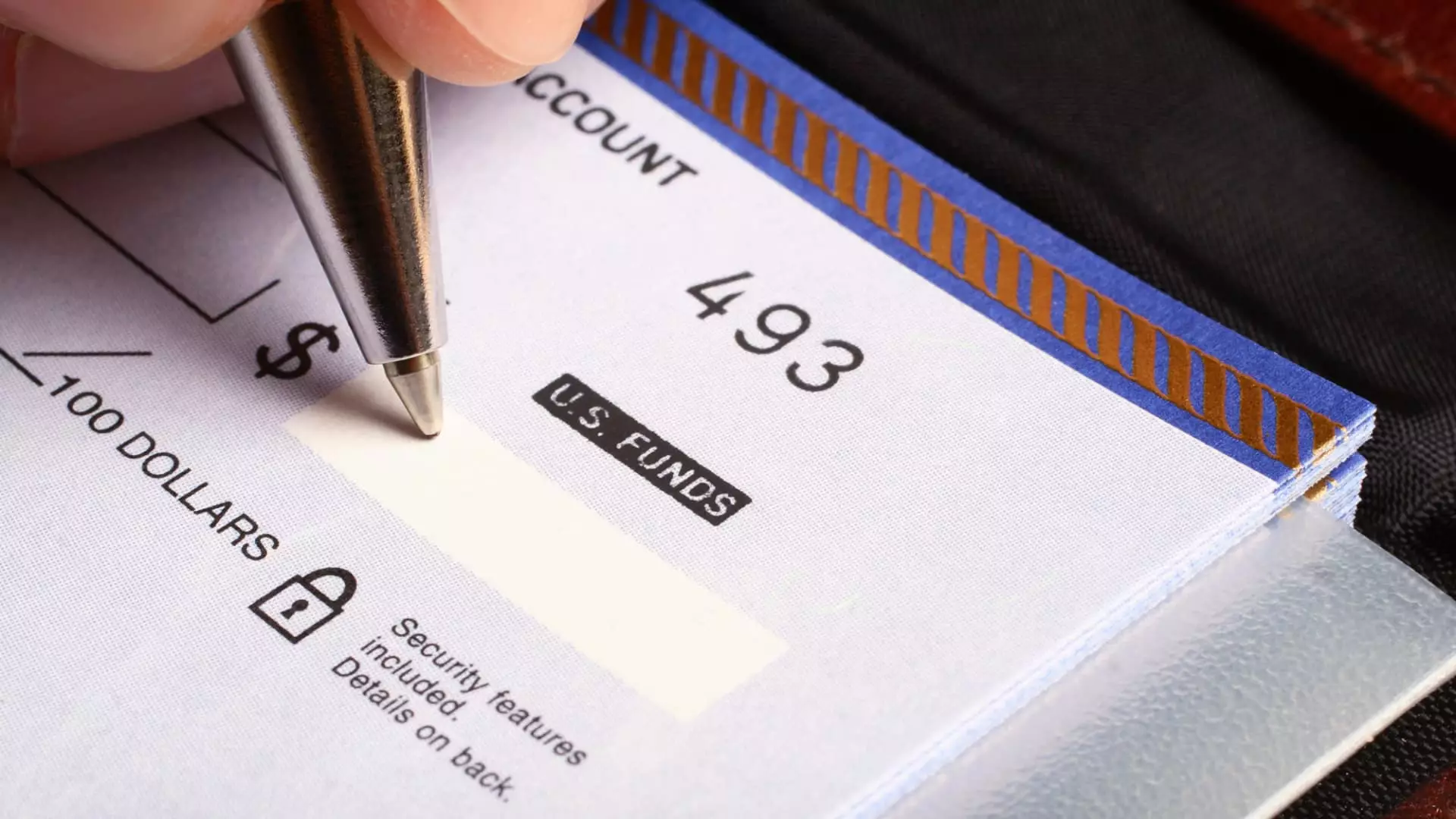In a world that thrives on speed and efficiency, the slow demise of paper checks appears inevitable. The recent executive order by President Donald Trump mandating a transition to electronic payments by the end of September 2023 is not just a bureaucratic shift; it’s a reflection of our technological evolution. The question is not whether we will abandon checks but when. As digital payments become the norm, we must consider the implications of this transformation for both consumers and governmental processes.
The administrative logic here is compelling. Paper checks not only breed inefficiency, but they also come with a hefty price tag in the form of lost payments, theft, and rampant fraud—issues that are becoming increasingly visible in today’s financial landscape. With a U.S. Government Accountability Office report estimating potential losses to fraud ranging between $233 billion and $521 billion annually, one must wonder why it took so long for the government to pivot. It’s about time we leave behind these antiquated mechanisms that have long outlived their usefulness.
The Rise of Digital Payment Forms
The shift to electronic payment methods, including direct deposits, debit or credit payments, and even digital wallets, is well-aligned with the preferences of a growing segment of the population. Recent surveys indicate that nearly half of Americans did not write a single check last year, signaling a stark shift in consumer behavior. This evolution towards “contactless” payment methods gained momentum during the COVID-19 pandemic, emphasizing a collective desire for efficiency and security over old-fashioned practices.
The role of banking institutions cannot be understated. Industry leaders have welcomed this mandate as an overdue reform. Rob Nichols, president of the American Bankers Association, emphasized how important it is to move away from checks, especially given the ongoing rise in check fraud. When banking groups are cheering for regulatory changes, it’s a powerful indication that the time for change is ripe.
Safeguarding Vulnerable Populations
However, as we rush toward a paperless financial terrain, there are groups that stand to be left behind, most notably the elderly and low-income populations. The elderly are significant users of paper checks, often relying on them for Social Security payments and other essential support programs. It’s concerning that those who need financial stability the most are frequently the least equipped to adopt these new technologies. While we advocate for modernization and efficiency, we must also ensure that digital connectivity does not further alienate marginalized communities.
In an age where we often celebrate technological advancement, we risk forgetting those who lack access to banking services or the internet. The government must prioritize the education and resources necessary for older adults to transition smoothly into the digital payment era. Without addressing these disparities, electronic payments could exacerbate existing inequalities rather than resolve them.
A Cultural Shift in Payment Preferences
Moreover, as younger generations trend towards digital payment systems like Venmo and Apple Pay, traditional banking systems face unprecedented challenges. Most young adults today do not carry cash or even possess checkbooks. They navigate financial transactions through their smartphones, often blurring the lines between banking and social media. This cultural shift towards a “checkless” society indicates a broader change in values: a preference for instantaneous and frictionless transactions over the cumbersome, archaic processes of yesteryear.
Adopting these digital wallets effectively transforms our smartphones into financial hubs, furthering the democratization of banking for tech-savvy individuals. However, one must question the implications of this shift in terms of privacy and the safety of financial data. Unlike traditional banks, many of these digital platforms lack FDIC insurance, leaving users vulnerable in the event of fraud or bankruptcy.
The Future is Here, But at What Cost?
As we stand at the crossroads of an entirely new payment landscape, it’s clear that convenience and efficiency come with their own set of complexities. Although the transition to electronic payments signals a step into modernity, it simultaneously poses new challenges—particularly for those who are already vulnerable in today’s economy.
It is imperative that any move towards paperless transactions be matched with robust support systems for those who may struggle with this shift. Education, accessibility, and protection against fraud must be our focus as we endeavor to embrace a future devoid of checks. The electronic payment revolution is upon us, and while it undoubtedly has the potential to transform our financial landscape, we must remain acutely aware of the disparities that accompany such change. The risk of leaving vulnerable populations behind cannot be overstated, nor should it be ignored in our fervor for progress.

